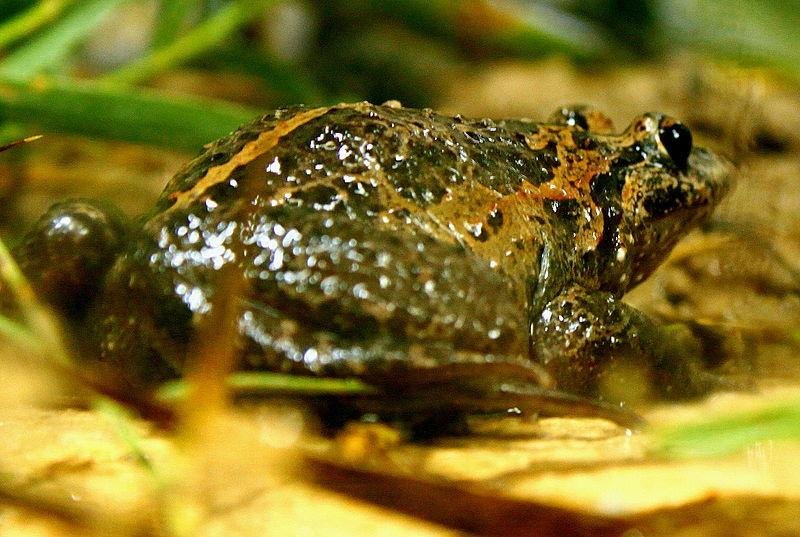Israel's Hula painted frog was rediscovered in 2011 after being the first amphibian ever declared extinct in 1966. After new analysis the frog has been reclassified and called a "living fossil." (CC/Mickey Samuni-Blank)
Israel's Hula painted frog, once classified as extinct, had not been seen for nearly 60 years until 2011.
According to a study published today in the journal Nature Communications, researchers discovered 11 specimens of the frog, both alive and dead, in its native Hula valley, including one adult female and four juveniles.
The Hula painted frog was the first amphibian ever declared extinct in 1966. These are the first observed in the wild since 1955, and after new analysis, the rediscovered frog has been reclassified as a distinct species.
When it was first described in the early 1940s, the frog was given the name Discoglossus nigriventer. Skeletal scans and molecular analysis of tissue samples revealed characteristics exclusive to the genus Latonia, which were once widespread throughout Europe but became extinct more than 10,000 years ago.
The Hula painted frog also differs from every other frog in Discoglossus in that they all have white abdomens, but the Hula painted frog has a black abdomen with white warts.
The researchers argue that the Hula painted frog is a so-called "living fossil," and must be reclassified as Latonia nigriventer to reflect its status as the only surviving species in the Latonia genus.
The frog's only known habitat is a single pond in the Hula Nature Reserve in Israel. Though much of the reserve had been drained and the habitat destroyed, researchers believe the frogs survived in small swampy patches.
The authors believe reflooding and restoring the reserve’s swamp may be the only way to ensure the species doesn’t become extinct, again.







